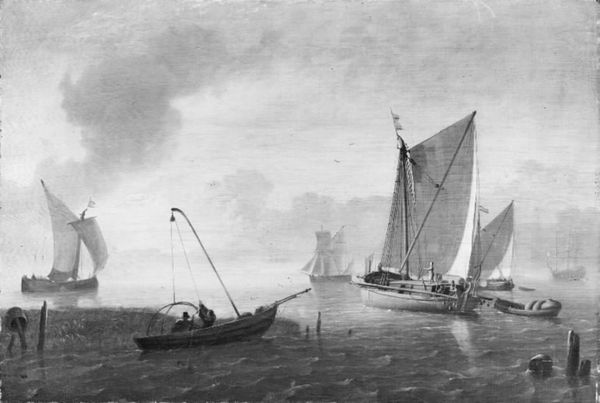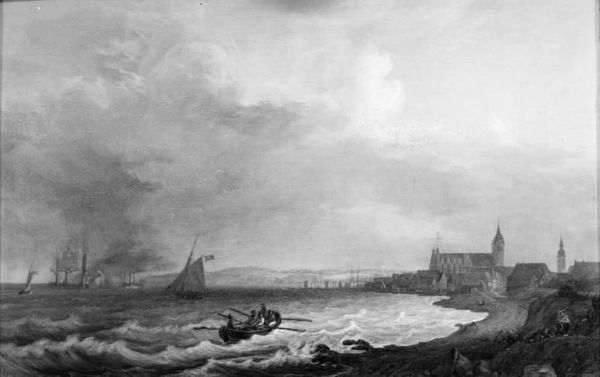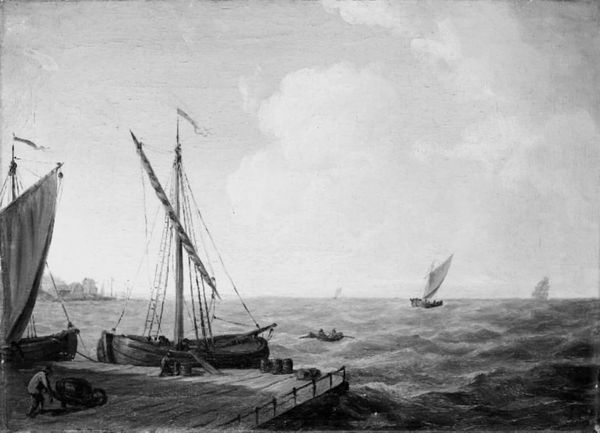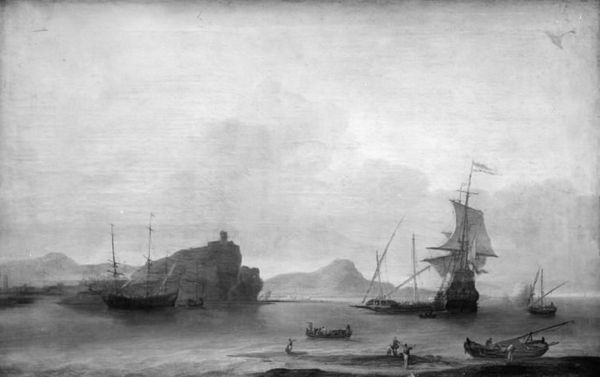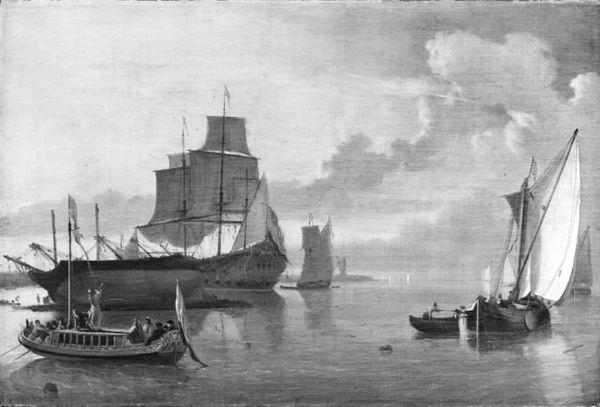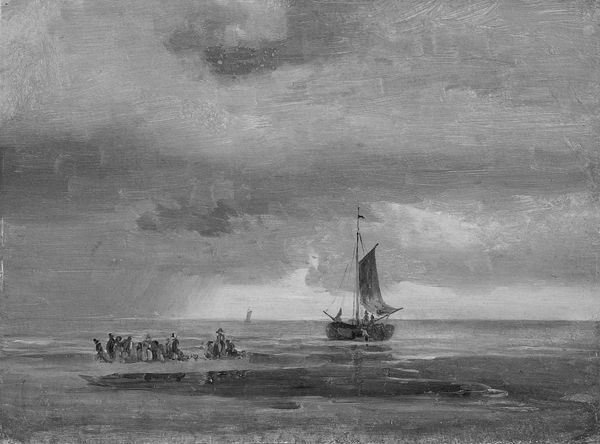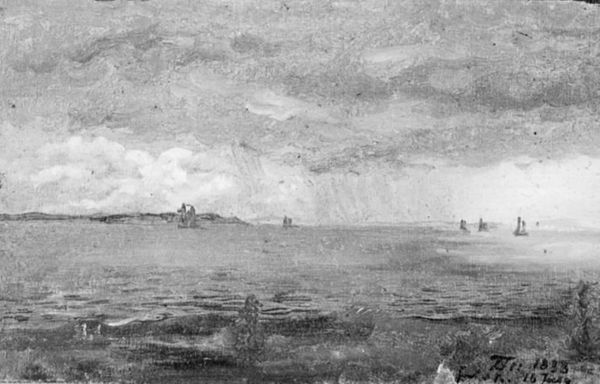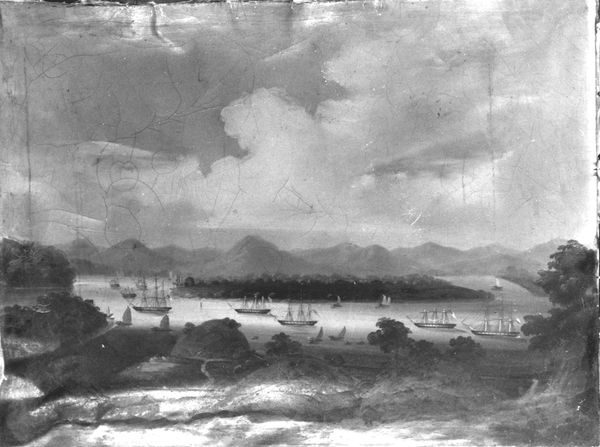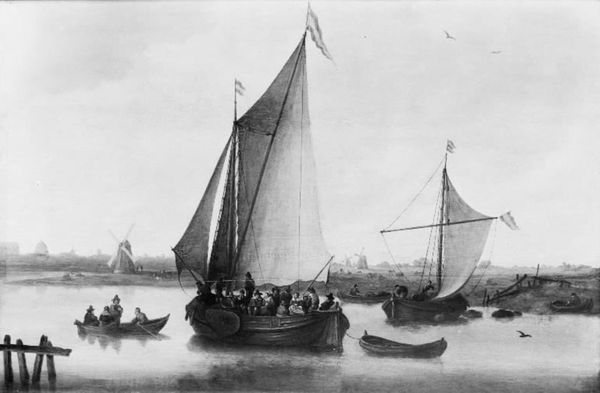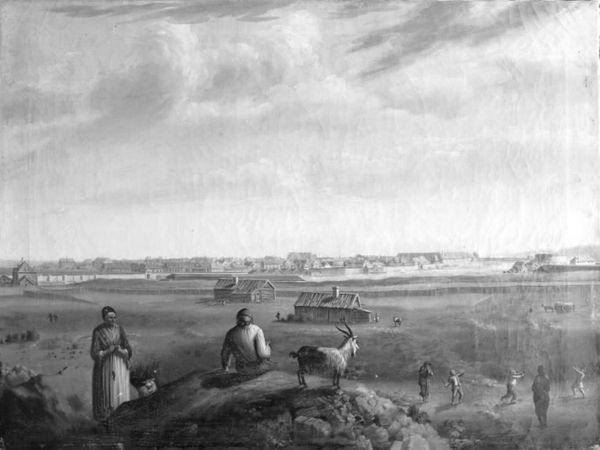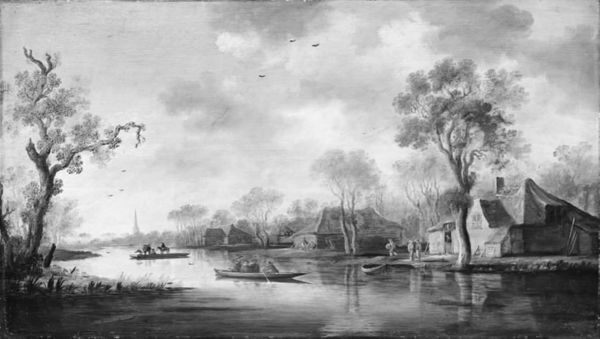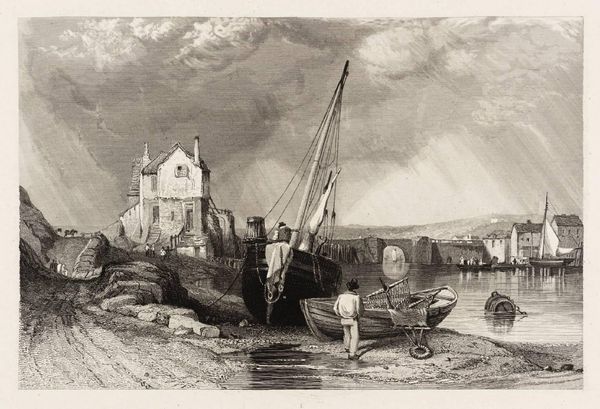
painting
#
painting
#
landscape
#
romanticism
#
black and white
#
monochrome photography
#
cityscape
#
genre-painting
#
monochrome
#
monochrome
Dimensions: 30.9 cm (height) x 39.4 cm (width) (Netto)
Editor: We're looking at "Kalkbrænderiet i måneskin," or "Lime Kiln in Moonlight," a painting by Emil Wolff, created around 1825 or 1826. It has this ghostly, monochromatic feel. The moon casts a strong light on the scene, highlighting the industrial buildings and the figures working near the water. What jumps out at you in this piece? Curator: What I find particularly compelling is the tension Wolff creates. It's presented as a Romantic landscape, a style often associated with sublime nature, yet the central focus is this industrial lime kiln. What does it mean to insert a symbol of human labor and industry into this kind of idealized setting? Who is romanticizing industrial production? Is this about ennobling the laboring classes, or is it about excusing environmental harm? Editor: I see what you mean. The setting is tranquil, almost beautiful, but that industrial structure feels like an intrusion, or maybe even a warning. It makes you think about the cost of progress. Curator: Exactly! And consider the figures: They seem dwarfed by the landscape and the kiln itself, hinting at their subservient position in this new industrial order. Wolff's choices here are a crucial commentary on the changing social and economic landscape of the time. How does labor, often unacknowledged and made invisible, sustain culture? Editor: It’s a striking point, positioning it within its historical context really brings out so many layers. The painting's beauty feels more complicated now. Curator: Right. We need to see beyond the surface and question whose stories are being told, and from what perspective. That disruption, that friction, makes it such a compelling piece of social commentary.
Comments
No comments
Be the first to comment and join the conversation on the ultimate creative platform.
